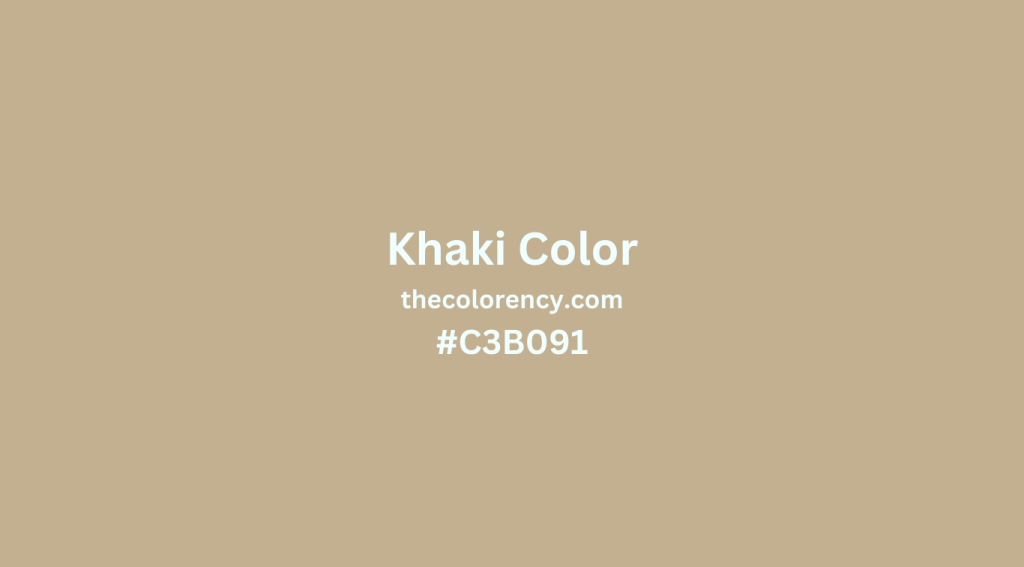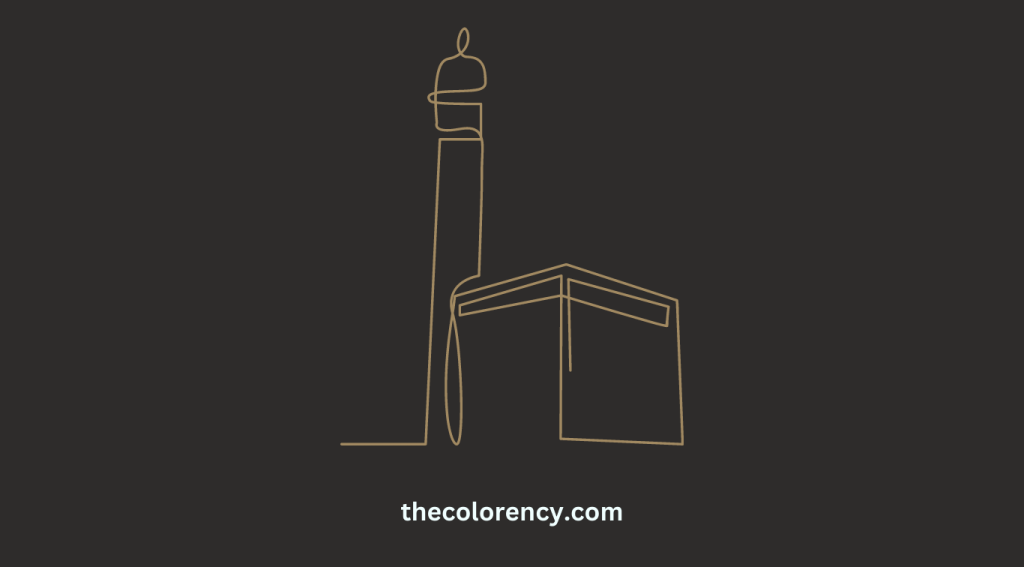
Khaki color is a unique and versatile hue that can be used in a variety of fashion and design styles. Its earthy tones and neutral nature make it the perfect shade to incorporate into any wardrobe, interior, or landscape. From its inception in the British Indian army to its modern-day use in fashion, this hue has truly stood the test of time. In this article, we will explore all you need to know about the history, symbolism, and uses of khaki color.
What is Khaki Color?
Khaki color is a warm, earthy hue that is most often associated with the British Indian army. Its name comes from the Hindi word khak, which translates to “dust” or “earth.” As a result, it is a light-brown color that is similar to the color of sand, dirt, or dust. This color is often used as a neutral in fashion and home décor due to its earthy tones and muted hue.
History of Khaki Color
Khaki color first appeared in the British Indian army in the mid-19th century. It was initially used as a uniform for the British troops, as it allowed them to blend in with the dusty terrain of India. Over time, the hue gained popularity and was adopted by other armies throughout the world, due to its efficacy in camouflaging soldiers in various backgrounds and environments.
Since then, khaki color has become a popular choice for military uniforms, as well as in fashion and interior design. Its neutral nature and timeless appeal have made it a staple in many classic and modern styles.
Symbolism of Khaki Color

The symbolism of khaki color extends across various domains, each carrying its own unique connotations.
Military Symbolism
Khaki color holds significant symbolism in the military. It is traditionally associated with strength, courage, and honor. Khaki uniforms have been worn by military personnel for their practicality and camouflage properties, allowing soldiers to blend into their surroundings while embodying the dedication and bravery of those who serve.
Fashion and Timelessness
In the realm of fashion, khaki is renowned for its timeless appeal. It is often regarded as a neutral and versatile color that effortlessly blends with other hues. Khaki garments are celebrated for their enduring style, providing a classic and understated look that transcends passing trends. This symbolism of timelessness and versatility makes khaki a popular choice in wardrobes worldwide.
Relaxation and Inviting Atmosphere
In home décor, khaki is favored for its ability to create a calm and inviting atmosphere. Its earthy and muted tones evoke a sense of tranquility and natural warmth. Khaki-colored walls or furnishings contribute to a comforting ambiance, promoting relaxation and serenity within living spaces.
Subtlety and Neutrality
Khaki color is often associated with subtlety and neutrality. Its understated presence allows other colors and elements to take center stage. Khaki can serve as a backdrop or foundation, providing balance and grounding to vibrant or contrasting elements within a composition. This symbolism of subtlety and neutrality makes khaki a valuable tool for creating visual harmony and cohesion in various art forms.
Practicality and Versatility
Khaki’s practicality and versatility are symbolic of its utilitarian origins. Originally used for military uniforms due to its durability, khaki has transitioned into civilian wear and beyond. Its ability to seamlessly adapt to different contexts and styles speaks to its versatility, making it a reliable choice across a range of applications, from fashion to interior design.
How to Wear Khaki Color

Casual Attire
For a laid-back and comfortable ensemble, opt for khaki shorts or trousers. Pair them with a simple t-shirt or a button-down shirt for a relaxed yet put-together look. Consider adding casual accessories like a canvas belt or sneakers to complete the outfit.
Formal Wear
Khaki can also be elevated for formal occasions. A khaki suit or dress pants paired with a well-fitted blazer and a crisp dress shirt exude a sophisticated and refined aesthetic. Add a tie or pocket square in complementary colors to enhance the ensemble’s elegance and polish.
Versatile Accessories
Khaki accessories can be the perfect finishing touch to any outfit. Hats, such as a fedora or a wide-brimmed hat, in khaki can add a touch of style and sophistication to your look. Khaki bags or backpacks provide a versatile and neutral option that complements various outfits. When it comes to footwear, khaki shoes, such as loafers or sneakers, can effortlessly blend with different colors and styles, offering a versatile and trendy option.
Layering
Khaki serves as an excellent neutral base for layering. You can experiment with different outerwear options like khaki trench coats, jackets, or cardigans. Layering khaki with other colors and textures adds depth and visual interest to your ensemble.
Contrasting Colors
When incorporating khaki into your outfits, consider pairing it with contrasting colors to create a visually appealing contrast. For example, combine khaki with rich jewel tones like burgundy, navy blue, or emerald green for a sophisticated and eye-catching combination.
How to Decorate with Khaki Color
Khaki color is a great choice for home décor, as it can easily be incorporated into any style. Whether you’re looking to create a cozy, inviting atmosphere or a modern, minimalist look, khaki color is the perfect hue to use. For a more traditional look, wallpapers and upholstery in khaki hues can be used to create an inviting atmosphere. For a more modern look, furniture and accessories in neutral khaki can be used to create a sleek, minimalist aesthetic.
What Colors Go with Khaki?
Classic Combination
For a timeless and sophisticated look, consider pairing khaki with navy blue, black, or white. These colors create a clean and polished appearance, suitable for both formal and casual occasions.
Modern Twist
To infuse a contemporary vibe, opt for shades of gray, brown, or green. These muted tones provide a modern and subdued palette, adding depth and subtlety to the overall composition.
Vibrant Contrast
For those seeking a bold and eye-catching aesthetic, consider incorporating bright colors such as yellow, pink, or orange with khaki. This combination creates a striking contrast, injecting energy and vibrancy into the color scheme.
Earthy Tones
Drawing inspiration from nature, khaki pairs well with earthy hues like rust, olive green, or terracotta. This combination evokes a sense of warmth, grounding the overall look and creating a harmonious connection to the natural world.
Soft Pastels
To achieve a gentle and delicate ambiance, consider combining khaki with soft pastel shades such as baby blue, light pink, or lavender. This pairing creates a soothing and feminine aesthetic, perfect for creating a serene and peaceful atmosphere.
Khaki Color in Art
Artists throughout history have utilized a vast array of colors to convey emotions, themes, and moods within their creations. Among these hues lies the understated yet versatile khaki color. Often associated with earthiness and simplicity, khaki offers a unique canvas for artistic expression. From landscapes to abstract compositions, fashion illustrations to sculptures, khaki finds its place, imparting a sense of tranquility and grounding. In this article, we delve into the diverse applications of khaki in art, exploring how this unassuming color adds depth and meaning to various artistic forms.
Khaki in Landscape Paintings:
In the realm of landscape paintings, khaki shines as a representative of sandy deserts, arid grasslands, and natural environments in their most undisturbed states. The subtle warmth of khaki captures the essence of these earthy landscapes, inviting viewers to immerse themselves in their tranquility. Artists skillfully blend khaki with complementary shades to evoke the soft, muted tones found in the natural world, creating a harmonious and serene atmosphere on the canvas.
Khaki’s Role in Abstract Art:
In the realm of abstract art, khaki takes on a new dimension. Often utilized as a neutral background color, it provides a balanced foundation for vibrant, contrasting elements to shine. The understated presence of khaki allows other colors and shapes to command attention, creating a dynamic interplay between boldness and subtlety. Furthermore, artists employ khaki to add depth and texture, lending an organic feel to abstract compositions. It acts as a bridge between diverse elements, offering cohesion amidst visual complexity.
Figurative Art and Khaki’s Influence:
Within figurative art, khaki serves as a valuable tool to depict clothing, fabric, or even skin tones. Its muted hue adds warmth and naturalness to portrayals of people and their surroundings. The choice of khaki can evoke a sense of realism, grounding the artwork in a relatable and familiar context. By utilizing khaki, artists can capture the subtle nuances of human form and fashion, infusing their works with an understated elegance.
Mixed Media Collages: Khaki as a Unifying Force:
Mixed media collages present another realm where khaki color finds its place. With its versatility, khaki can harmonize different materials, textures, and colors within a collage. It acts as a unifying force, bridging the gaps between diverse elements and creating visual cohesion. As artists layer materials and colors upon a khaki backdrop, a unique tapestry of expression emerges, showcasing the interplay between various artistic components.
Khaki in Sculptures and Fashion Illustrations:
Sculptors and fashion illustrators alike find value in incorporating khaki into their works. In sculpting, khaki-colored materials, such as clay or textiles, offer opportunities to create textured surfaces and evoke the essence of specific objects. This color enhances the three-dimensional qualities of sculptures, adding visual interest and depth. Similarly, in the realm of fashion illustrations, khaki can represent specific garments or serve as a background color, complementing the overall composition. It imparts a utilitarian or military-inspired aesthetic, grounding the fashion imagery in practicality or ruggedness.
Conclusion
Khaki color is a unique and versatile hue that has a storied history and a variety of symbolic meanings. From its inception in the British Indian army to its modern-day use in fashion, this hue has truly stood the test of time. Its earthy tones and neutral nature make it the perfect shade to incorporate into any wardrobe, interior, or landscape. With this article, we hope you now have a better understanding of all you need to know about the history, symbolism, and uses of khaki color.
